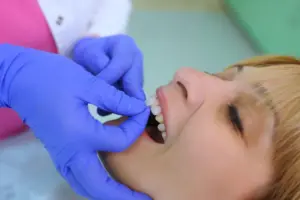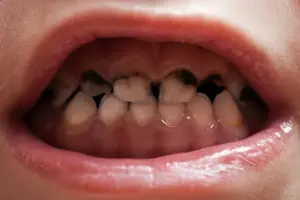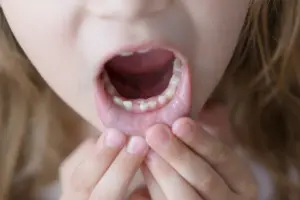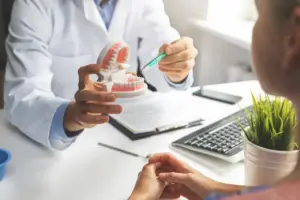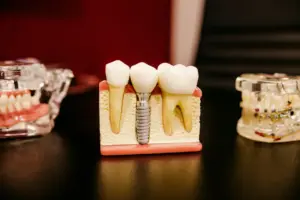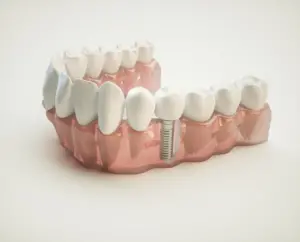The History Of Dental Braces
Table of Contents
ToggleIntroduction
Dental braces, sometimes referred to as braces, orthodontic cases, or cases, are orthodontic devices that help place teeth about the bite and align them straighter. They also attempt to promote dental health. In addition to malocclusions, overbites, open bites, gaps, deep bites, cross bites, crooked teeth, and other defects of the teeth and jaw, they are frequently used to treat underbites. Braces can be structural or cosmetic. To broaden the palate or jaws and to help with other aspects of tooth and jaw shaping, dental braces are sometimes used in conjunction with other orthodontic appliances.
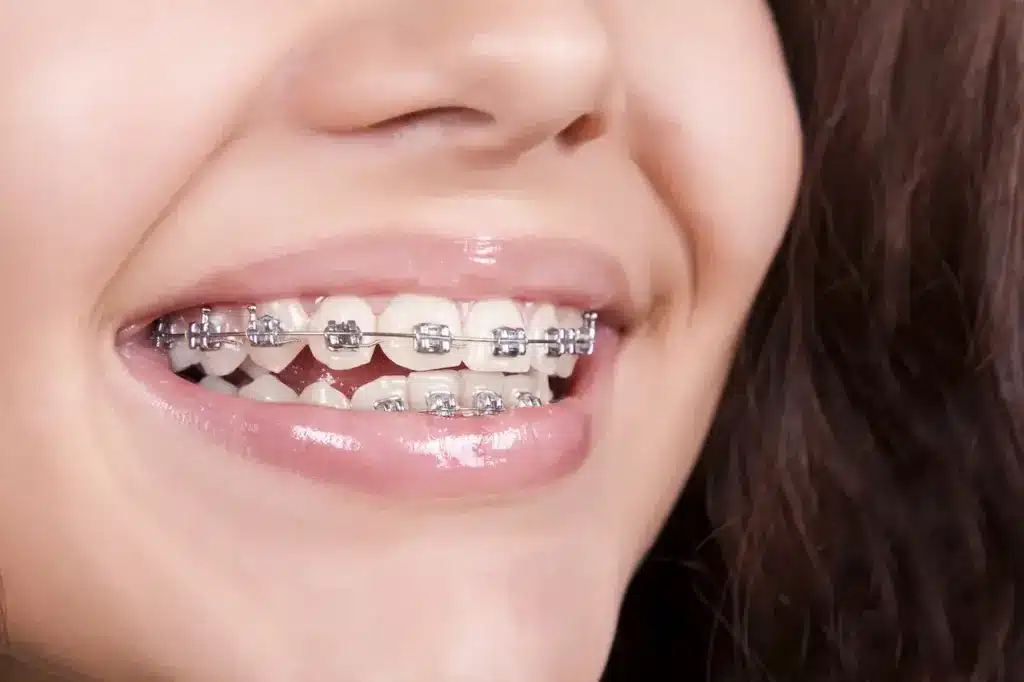
Who Invented Braces and Why?
The “surgeon dentist,” Pierre Fauchard, is regarded as the founder of modern dentistry and is credited with creating the first braces. With his “wire crib,” he made revolutionary discoveries that set the stage for modern braces.
Subsequently, Edward Angle—who was well-known for his broad training in both medicine and dentistry—improved braces into a more successful therapy that concentrated on correct teeth positioning and jaw alignment. Their journey began long before braces were familiar in dentist offices.
While ancient practitioners may have been the “first dentists” to work for improved teeth, important personalities in dental history are credited with creating the contemporary notion of braces.
Origin and Ancient History
Historians and academics claim that braces have been around since prehistoric times. Hippocrates and Aristotle considered methods for correcting dental irregularities and straightening teeth between 400–300 BC. Many ancient people who have been mummified have been found to have metal bands wrapped around their teeth, according to archaeologists. When it came to filling in gaps in the teeth and mouth, catgut—a kind of cord created from the organic fibers of an animal’s intestines—performed a function comparable to that of modern orthodontic wire.
To preserve space and avoid the teeth collapsing in the hereafter, the Etruscans interred their deceased with dental devices in place. A ligature wire, a tiny elastic wire used to secure the Toe archwire to the bracket, was discovered in a Roman tomb containing several teeth bound with it. Cleopatra had a pair as well. Finger pressure dental treatment was first documented by Roman physician and philosopher Aulus Cornelius Celsus. Unfortunately, not much research was done on dental braces until the 17th century, even though dentistry was already making significant strides as a profession at that time due to a lack of evidence, poor body preservation, and antiquated equipment.
Orthodontic Braces
To improve dental health, orthodontic braces—also known as just braces—are tools used in orthodontics to align and straighten teeth.
The many defects of the teeth and jaw that they are used to rectify include open bites, deep bites, cross bites, underbites, overbites, crooked teeth, and many more. Braces can help broaden the palate or jaws and help shape the teeth and jaws in other ways. They can be structural or cosmetic and can be used in conjunction with other orthodontic products.
Braces have a long history, just as the desire for perfectly aligned teeth. Evidence suggests that the first dental equipment was made of animal skin and gold wire and that these crude braces were used to straighten teeth.
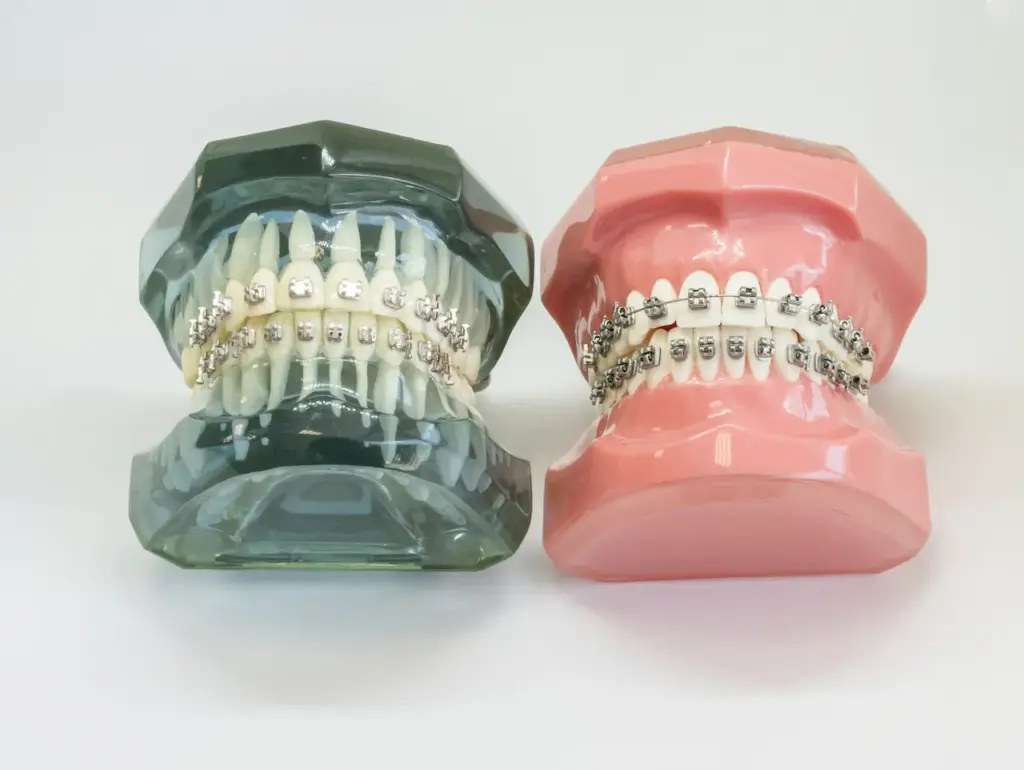
These archaic braces eventually gave way to the more identifiable standard metal braces. Present-day braces come in a variety of forms, from conventional metal braces to invisible braces composed of cutting-edge materials like transparent plastic retainers.
Unlike the scary dental gadgets of the past, they use moderate but effective forces to guide teeth into normal alignment.
How Did Braces Appear in the 1970s?
The braces had changed a lot by the 1970s. Braces became more widely available and reasonably priced during this era when stainless steel was introduced. The prevalence of orthodontic braces began to rise, particularly among youngsters receiving orthodontic treatment.
Brace designs shifted from having the look of “tin teeth” to being smaller and less noticeable. Dental adhesives have improved, giving patients less discomfort and a better fit for their brackets.
Improvements in Technology and Materials Utilized
Significant technological improvements in orthodontic care occurred during the 1970s. With the introduction of new materials like plastic and rubber, the dental dam and rubber tubing—which assisted in exerting light pressure for teeth movement—were created.
Braces are now more efficient and pleasant thanks to these developments. Orthodontists started applying dental research to improve their methods of aligning teeth and realigning jaws.
Because of this, braces in the 1970s were used to ensure good oral health and alignment in addition to straightening crooked teeth. During this time, there was a noticeable trend toward orthodontic appliances that were more aesthetically pleasing and patient-friendly.
The Acceptance and Spread of Braces Worldwide
Braces began as a treatment for the few but have become a common orthodontic solution worldwide. Increased knowledge of dental health and the value of straight teeth for both function and appearance was the driving force behind this widespread expansion. More people sought treatment as dental research progressed because braces became more effective and safe.
As they adopted and disseminated innovative techniques internationally, surgeon dentists were instrumental in this proliferation. A major change in dental care procedures occurred when orthodontic treatment became a rite of passage for many youngsters in various countries by the late 20th century.
Cultural Effects and Evolution of Perception
The braces have had a huge cultural impact. At first, they were frequently thought of as frightening dental tools reserved for serious dental problems. But when braces became more efficient and less noticeable over time, people’s perceptions changed. In many cultures, braces are increasingly frequently regarded as a sign of wealth or a proactive commitment to healthcare.
The increasing braces use among public figures and celebrities has normalized and even glamorized orthodontic treatment. persons of all ages trying to enhance their smiles and oral health therefore saw a sharp rise in the number of persons seeking orthodontic treatment.
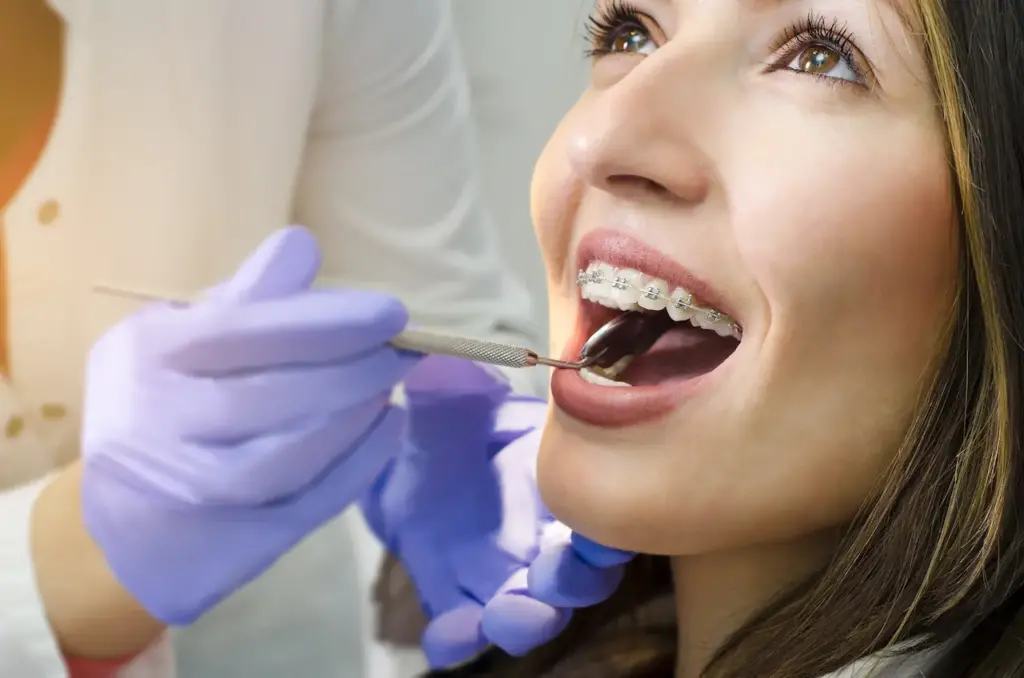
Prospective Advancements in Orthodontic Therapy
The future of orthodontic treatments looks bright with the continuous emergence of new technologies. Innovations like 3D printing and digital scanning are set to revolutionize the way braces are designed and fitted, offering more customized and efficient treatments.
Researchers are searching for even more comfortable and effective materials for dental appliances as materials science advances. Sophisticated braces with dynamic pressure adjustments and real-time therapy progress tracking may be developed.
Future dental research may lead to more efficient procedures that shorten the time and cause less discomfort than standard braces.
Conclusion
As we’ve seen, the creation of braces aimed to improve oral health in general as well as dental attractiveness. Every development in orthodontics, from the use of dental dams for improved cleanliness during treatment to the invention of gum elastics to hold brackets in place, has been a stride toward providing orthodontic care that is more efficient and comfortable for patients.
Innovation in orthodontics doesn’t end with the tools available today. With continuing studies aiming at reducing tooth loss, enhancing periodontal ligament function, and guaranteeing the long-term health of molar teeth and wisdom teeth, the area is always changing.
Given that early intervention can produce superior results, teenage orthodontic cases will also be addressed more skillfully in the future of orthodontic care.
The patient experience and treatment outcomes will be enhanced by the continued refinement of the use of rubber tubing, arch wires, and other dental devices. The goal has always been to make sure that everyone receiving orthodontic treatment, whether they have already received it or not, can look forward to improved dental health and a more self-assured smile in the future.


